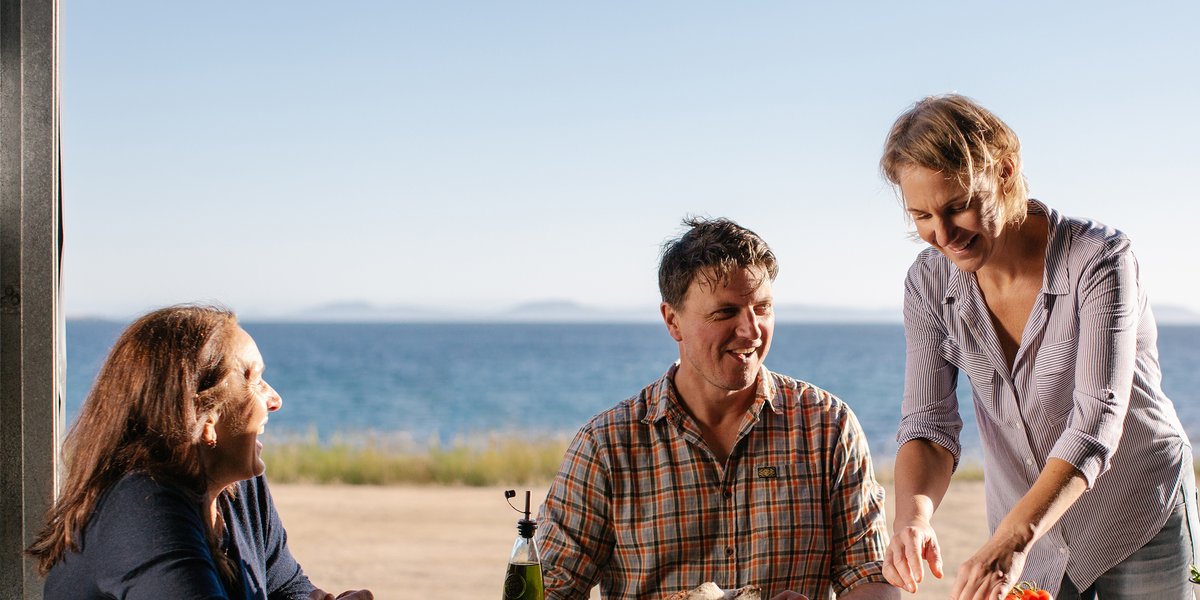Chris & Caro Brown
"Even though we might use traditional techniques, we’re not constrained by that tradition, and we’re not afraid to do something a bit different. We hope to encourage other people so that it’s not so daunting for them."
"Chris calls them 'the curiosity apples'. People definitely are curious, because many of the varieties are ones they haven’t heard of before. It leads to fantastic conversations."
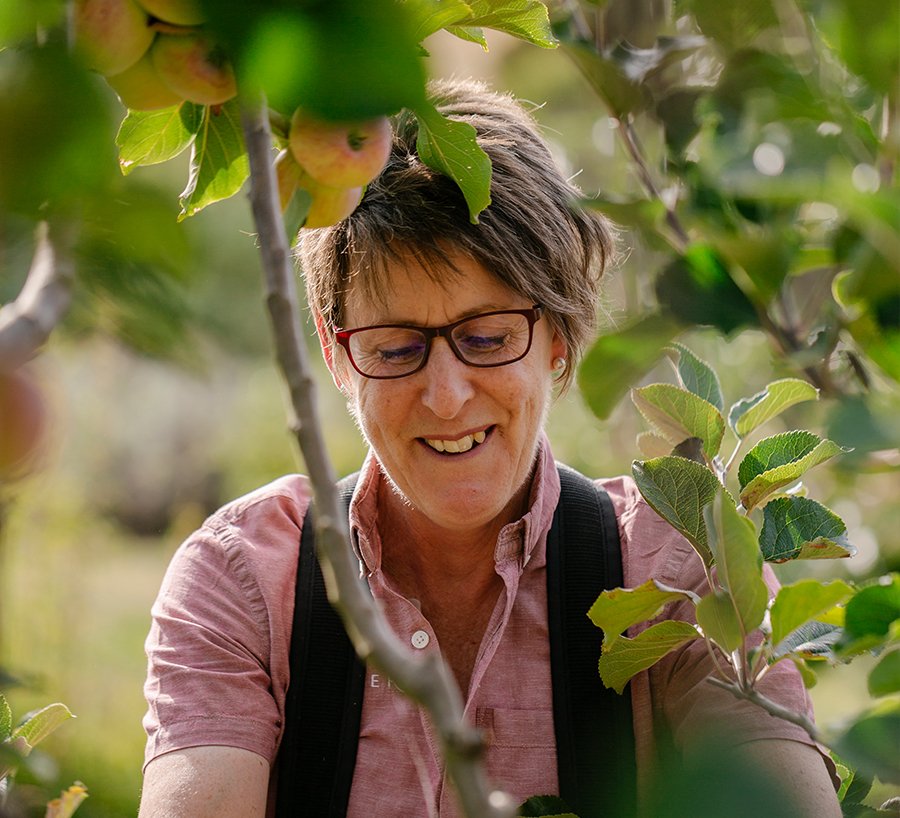
There aren’t many cider mills, even in Tasmania, where you’ll discover insect hotels, an Eastern Barred Bandicoot Conservation Program, and an organic orchard that contains more than 80 rare apple varieties.
But then, there aren’t many cider makers like Chris and Caroline Brown.
Since 2015, Chris and Caro have owned Brady’s Lookout Cider: a boutique cider mill at Rosevears in the West Tamar. Originally a pear and walnut orchard, the property has been transformed by the Browns since their first small planting went in the ground in late 2016.
“We purchased the property for its location,” says Caro. “It hadn’t been cared for in some time so we’ve had to do a lot of maintenance. A third of the property was literally just weeds. We do still have a really old heritage walnut, about six old pear trees and one really old apple tree here, but the rest were grubbed out back in the 70s.”
The ‘grubbing out’ that Caro refers to is a story that can be heard all over Tasmania. Although the ‘Apple Isle’ moniker is still widely used, apple production in the state peaked in the mid 1960s, when almost 9 million boxes of apples were produced each year. When the UK joined the European Common Market in the early 1970s Tasmania’s main export market collapsed, and the Australian Government’s Tree Pull Scheme paid growers $1 a tree to remove their apple trees.
As a result, the number of orchardists in Tasmania fell by 700, and it’s only due to the resilience, ingenuity and diversification of the industry – not to mention an increasing consumer thirst for cider – that things are now finally on the up again.
For Caro and Chris, who both grew up rurally in Tasmania, realising their vision for Brady’s Lookout Cider has been an exciting opportunity to renew and refresh old family traditions.
“Historically, my family has been involved in orcharding,” says Caro. “Chris was talking to my dad about what he did when he was younger – on the weekend after picking in the orchard, the boys would go out the back of our historic apple shed down the Huon and drink some of the cider they’d made. Chris was very curious about that. He talked to Dad about how they made the cider in a very traditional scrumpy-type way – quite raw and unfinished.”
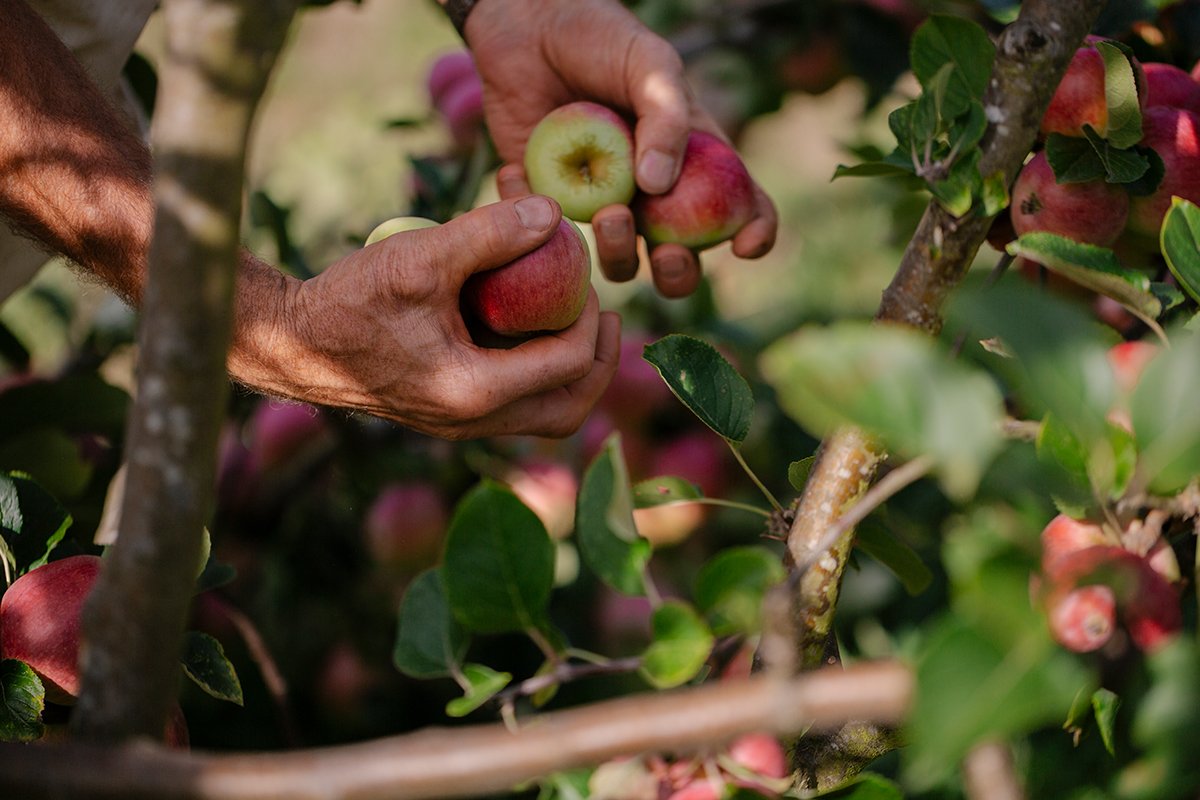
That conversation with Caro’s dad prompted Chris to experiment with some apples from the back of the couple’s property at Riverside, as well as some foraged varieties, to make their first cider on a very small scale.
“Some of it was good, some not so good,” laughs Caro. “But it’s like anything, when you practice a bit more, you start to get better at it.”
The Browns soon decided they wanted to have a go at cider making on a commercial scale, but they realised that with an increasing number of craft makers emerging in Tasmania, they needed to find their own unique approach.
“We did some market research to work out where the niche was,” says Caro. “The gap we found was the méthode champenoise – the sparkling method of production – so we decided to go overseas and look at how makers in Europe were doing that. We also did a cidermaking course in the UK to perfect our technique.”
The couple’s skills are a perfect fit for their current venture. Chris is a carpenter by trade, and continues to work as a carpentry teacher at TAS TAFE, while Caro’s career has focused on finances, investment and agricultural policy and development.
That combined expertise, along with an enthusiastically hands-on ethos, has heavily influenced the direction that Brady’s Cider has taken. Throughout the process of developing the property over the last seven years, the Browns have placed a big focus on using upcycled, sustainable materials for the cider mill and cellar, and have set aside one third of the land for conservation purposes.
“We had to change the landscape a little bit when we came here because the property had so many weeds on it,” says Caro. “When we were doing that, we also wanted to make sure we were creating habitat for animals. The Eastern Barred Bandicoots are actually great for us in that they help manage the orchard – they’re digging in the ground and getting the little insects that we don’t want. We have one project we’re working on with the University – they’re doing studies on what’s in the landscape and what genetic diversity we have with the bandicoots. We also work with the local Rotary Club on tree planting, and soon we’re hoping to work with a local Men’s Shed to run workshops on nesting boxes and insect hotels.”
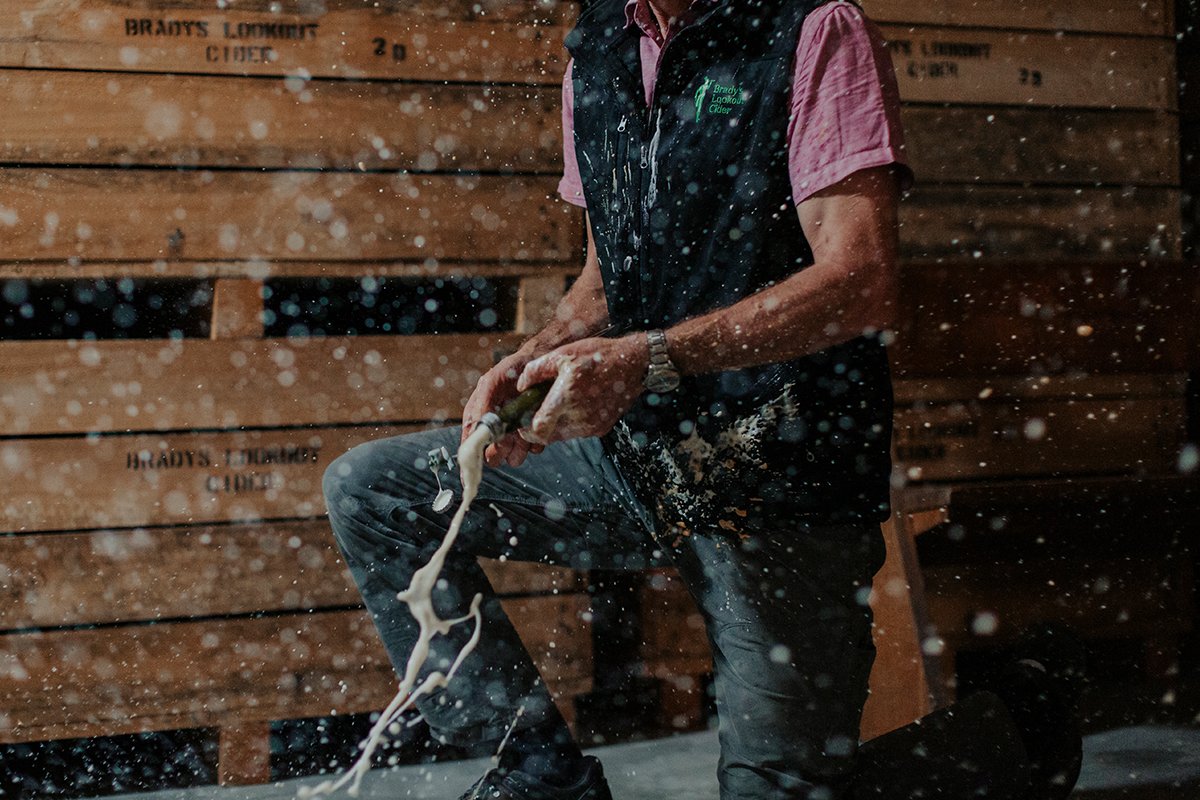
There is an old saying in Australia that the best apple to make cider with is whatever apple you can get. Historically, Tasmania has not had dedicated cider orchards, focussing instead on eating and cooking apples. In the days before cool storage was available, a typical orchard had over 30 varieties in order to serve the market
“Cider apples sometimes get called spittables,” says Caro. “You might sometimes spit them out because they’re so awful. But when you blend together different varieties, that’s where you get the excitement happening.”
In Caro and Chris’s orchard, you’ll discover more than 80 rare apple varieties, some of which have not been planted for many years. In the harvest season, which runs from March to May, they take some of the eating and cooking varieties to sell at Launceston’s Harvest Market.
“Chris calls them 'the curiosity apples'” says Caro. “People definitely are curious, because many of the varieties are ones they haven’t heard of before. We talk to people and we’ve also got signs that explain what the varieties are, what they might taste like, what they can be used for, the country of origin and when they were discovered. It leads to fantastic conversations. We normally allow people to mix and match rather than selling them pre-bagged and that’s part of the excitement. People can take them home and experiment a bit.”
This holistic, creative approach that Caro and Chris have taken with developing their orchard is also the way they have approached their cider making – to great success. While Caro would say that they are still working to perfect their ciders, Brady’s Lookout products are becoming increasingly known and celebrated for their aromatic, delicate combinations that mirror the sparkling wines the Tamar Valley is so well known for.
“When we have been lucky enough to travel to Europe, a lot of people are quite surprised by the new things that Australians take on,” says Caro. “They see that even though we might use traditional techniques, we’re not constrained by that tradition, and we’re not afraid to do something a bit different.”
“For us it’s like wine – we really want to create that nuance in the cider that’s different from everyone else. But we also want to create that curiosity about why we’re caring for the environment. We hope to encourage other people so that it’s not so daunting for them.”
Chris & Caro are featured in partnership with our friends in the Department of State Growth Tasmanian Trade team.

We worked with north west Tasmanian photographers Moon Cheese Studio, southern Tasmanian cinematographer Joshua Lamont ACS, and southern Tasmanian writer Ruth Dawkins for this Tasmanian story.
You can find these images and more in our Tasmanian Partner Toolkit.
Read about more Tasmanians
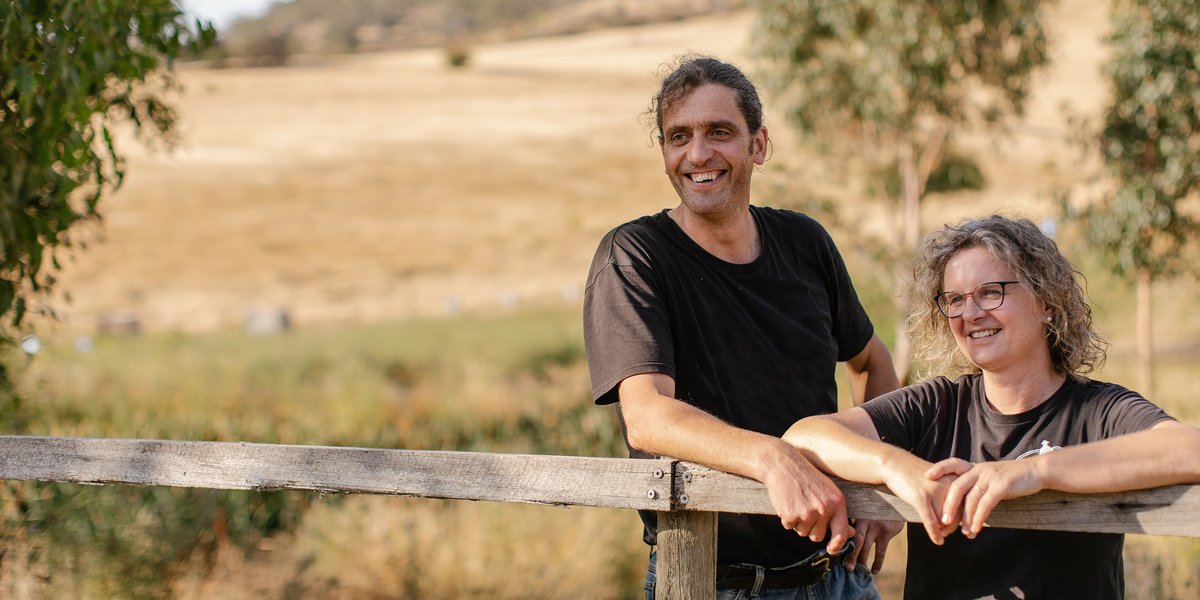
Ashley & Jane Huntington
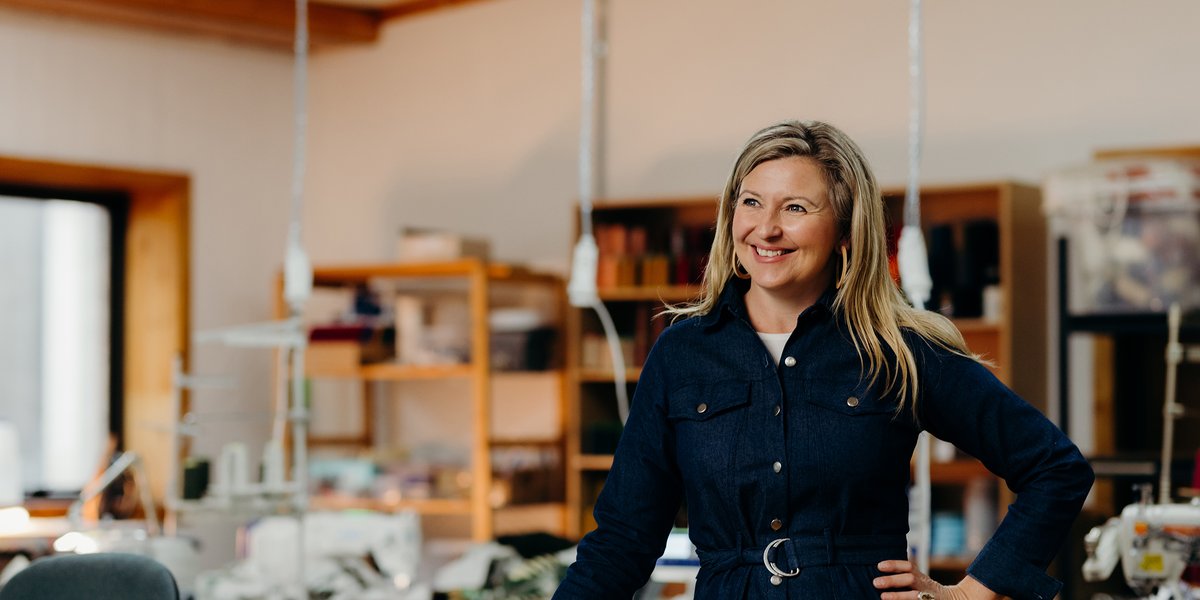
Tamika Bannister
